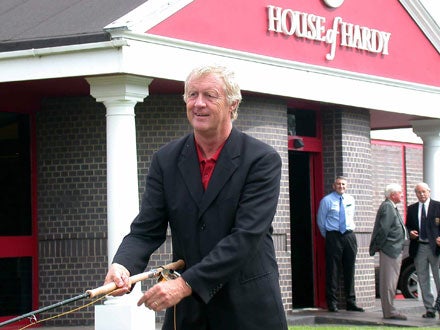| Mark Williams |
| Mark spent seven years on ‘Angling Times’, was editor of ‘Sea Angling Handbook’, deputy editor of ‘Salmon, Trout and Sea-Trout’, deputy launch editor of the defunct ‘Practical Coarse Fishing’, and has done freelance for a number of fishing titles. |
| Writing about fishing, Part Two A WHILE back I threatened to inflict some more advice on FISHINGmagic, and to my surprise, several anglers wrote and said they liked the idea. So, thanks fellas. Always nice to be ‘bigged up’ in this way…. Waxing lyrical… Take a look through newspapers and you’ll quickly discover two or three styles of writing. Most obvious is news style – a cascade of facts, starting with the most important and ending with the least. Then there’s opinion writing, sometimes called comment or ‘editorial.’ Look a little deeper and you’ll see feature writing. I mention this because, before you begin writing anything, it does pay to spend a few minutes thinking about WHY you want to write. If you’ve just caught a big fish, you may want to submit a story to the local paper, Angling Times/Angler’s Mail, or FISHINGmagic, of course!
When I was a cub reporter, all news stories were written with the ‘WHAT’ formula. ‘W’ stands for What happened? ‘H’ for How did it happen? ‘A’ for Any other details, and ‘T’ for Tie up any loose ends. Easy, I thought. It wasn’t. I work with a guy who writes crap news stories. He has his head swimming with detail, and spews it into the first paragraph, which is often a 35-word sentence. So every now and then I ask him what he’s writing about. He says something like: “Five Londoners have been killed in a car accident with a bus.” “Good first paragraph,” I say, and he looks at what he’s written, deletes it and starts again… News writing is the same technique as telling a good yarn down the pub: “Did you hear that Dan caught a 30 from his dad’s pit on a fly?” you say, and everyone is interested, so you can tell the rest of the tale. You don’t say: “Dan tied a pike fly with pink marabou last Saturday.” That may be where the story, chronologically, began, but like a pub storyteller, you need to grab attention in the first 10 words. On ‘The Sun’, all first paragraphs are less than 15 words long (though I bet one of you will find one that’s not!) and that rule is there for a reason. So let’s have a look at a potential news story – the North West Junior Fish-In, in News on this very website. Now, I’m not knocking Mike Breen here; well done to him for sitting down and writing such a comprehensive report in his spare time. For his age and experience, it’s excellent, and I reckon I could train him up into a fishing reporter in six months. But let’s look at his first paragraphs: “This year saw the 4th annual North-west junior fish-in hosted at Higher Hall Flash in Leigh. Sixteen lads and two girls took part in the event, which was more than in any previous year. The fish-in started at 7.30 am on Saturday the 2nd of July and ran till 4.30pm Sunday. So at 7.30 sharp myself and the other excited youngsters arrived laden with tackle ready for the weekend. Experience levels varied from four years carp fishing to having never carp fished before.” This was a match in which two lads caught more than 40lb of carp, there were four PBs and two thirds of the juniors caught fish. Is this the right intro? Go for the glory first; cherry-pick the highlights, as I have, for your intro; get the reading juices of your readers flowing, before dealing with the detail. What happened? “At the biggest-ever North-West Junior Fish-In, four youngsters set personal bests and two caught more than 40lb of fish.” That, I say, is the intro, because now you want to know How it happened. Try to be logical in the placement of your facts: “Two thirds of the field weighed in, one junior angler caught a near-20, and Jenny Jackson – one of two girls fishing – got TWO 18lb 8oz carp… both PBs” There’s my second paragraph, with rather too much punctuation. And I still haven’t got to the How it happened. That, in a nutshell, is how to write a news story. You’ve first of all got to picture your reader; don’t get technical for the local paper, most of whom aren’t anglers. See the story through their eyes. Select the most thrilling/interesting/shocking facts, put them in order, take the first one or two, and make them into a sentence. Then the next two or three, and so on. Dead easy. The opportunities to write freelance news stories are pretty rare (especially if you want to get paid) but it’s a fact that, until you can piece one together, you haven’t an earthly of writing a really great feature, so try to write one now and then. The technique for writing features and news is completely different, but news writing is a great discipline; it teaches you to make every word count, never to waffle, to find out the facts, and to assemble them in a logical order. The technique may be different, but these are also the core skills of feature writing. |











